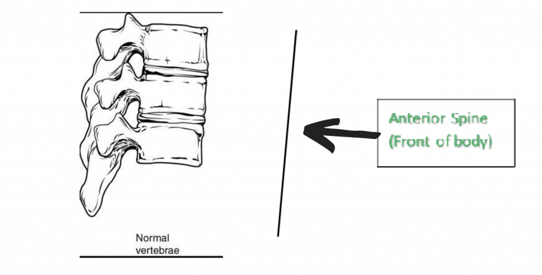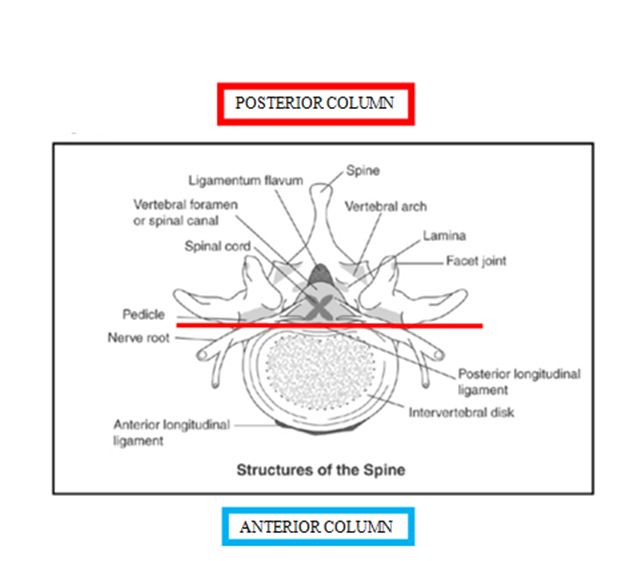Nov 10, 2023

During some of our recent coding reviews, we have found that coders are missing the reporting of the ICD-10-PCS procedure code for posterior spinal fusions when done with anterior spinal fusion. Posterior spinal fusions are separate fusions than are done for anterior spinal fusion.
Why is this so important?
As coders know, reporting a true anterior approach, anterior spinal fusion along with a posterior approach, posterior fusion will impact the MS-DRG in a BIG WAY, sometimes tens of thousands of dollars. If the posterior spinal fusion is left off, it is a MAJOR impact to reimbursement. Resulting errors of omission or wrong coding can impact relations with clients as well as reimbursement.
Only Anterior Spinal Fusion Performed
0SG00A0 Fusion Lum Jt w Intbd Fus Dev, Ant Appr A Col, Open leads to
MS-DRG 460 Spinal fusion except cervical without MCC
RW 3.6579 Reimbursement: $23,768.19
MS-DRG 459 Spinal fusion except cervical with MCC
RW 6.6323 Reimbursement: $43,095.16
COMPARED TO
Anterior AND Posterior Spinal Fusion Performed
0SG00A0 Fusion Lum Jt w Intbd Fus Dev, Ant Appr A Col, Open
0SG0071 Fusion Lum Jt w Autol Sub, Post Appr P Col, Open
MS-DRG 455 Combined anterior and posterior spinal fusion without CC/MCC
RW 4.6056 Reimbursement: $29,926.13
MS-DRG 454 Combined anterior and posterior spinal fusion with CC
RW 6.1163 Reimbursement: $39,742.31
MS-DRG 453 Combined anterior and posterior spinal fusion with MCC
RW 8.8614 Reimbursement: $57,579.34
As you can see there are HUGE impacts in reimbursement depending on whether or not both anterior and posterior fusion codes are coded and also if CC or MCC are coded. It is also impactive of other vertebral areas such as cervical fusions.
Any time a coder arrives at DRGs 459 or 460, they should be looking again at the op note for both anterior and posterior fusions documented.
Anterior vs posterior spinal fusion and what to look for:
Below is an excerpt from our spinal fusion series. In our blog post, Spinal Fusion Coding — Region of Fusion and Number of Vertebrae Fused, we focused on determining the level of the fusion(s) and how to determine the number of vertebrae fused. In our blog post, Spinal Fusion Coding — Identifying the Column Being Fused, we focus on identifying which column is being fused (anterior, posterior or both). When coding a spinal fusion record, the operative report should be reviewed to determine if the fusion is being performed on the anterior or the posterior column of the spine, or even both. Let’s look at what this means.
Anterior Column:
The anterior part of the spinal column refers to the spine that is at the front of the body. If the fusion that is being coded has documentation of an interbody fusion device/cages or described as interbody, that would mean that the anterior portion of the spine is where the fusion is taking place. This is not the same as the approach. We discuss the different approaches in our blog post Spinal Fusion Coding — Identifying the Approach Being Used for Fusion.
Posterior Column:
The posterior part of the spinal column refers to the spine that is at the back of the body. If the operative note describes rods and screws with bone graft or decortication of the spinous processes this is in the posterior column. Other terms to help determine the posterior column are lamina, facet, articular process and transverse process.

Photo courtesy: wikimedia.org
Both Columns?
Be sure and code both anterior and posterior fusion if both are documented. With all the advances in medical technology, both anterior and posterior fusions are being completed via one incision without having to turn the patient. Learn more about this by reading our blog post Spinal Fusion Coding — Identifying the Approach Being Used for Fusion. Also, a big tip to looking for posterior fusion is to see if the surgeon is decorticating lamina or vertebra, then placing it in the gutter of the vertebra. Coders can search the op note for “gutter’ in these instances. However, the surgeon may also state ‘fusion’ as well for posterior fusion.
Key terms/Phrases: The anterior column – Look for disc removal, Interbody device. The posterior column is the back of the spinal column: look for pedicle rods and screws with bone graft; decortication of the spinous processes and other terms indicating posterior column including lamina, facet, articular process, and transverse process. Placing decorticate bone graft in the posterior gutters. (which are an area on the posterior spinal vertebra) See photo below.

Bone graft used for posterior “Gutter” placement for fusion can be from local decortication or elsewhere and also can be allograft or other graft.
SUMMARY
Download our e-book on Spinal Fusion Coding.
References
https://hiacode.com/blog/education/identifying-the-column-being-fused https://hiacode.com/blog/education/spinal-fusion-series-summary
Since 1992, HIA has been the leading provider of compliance audits, coding support services and clinical documentation audit services for hospitals, ambulatory surgery centers, physician groups and other healthcare entities. HIA offers PRN support as well as total outsource support.
The information contained in this coding advice is valid at the time of posting. Viewers are encouraged to research subsequent official guidance in the areas associated with the topic as they can change rapidly.
Subscribe to our Newsletter
Recent Blogs
Related blogs from Medical Coding Tips
Complex coding scenarios often lead to delays...
Provider documentation is the foundation of a...
Accuracy is the foundation of quality coding....
The 2026 updates to CPT and the Hospital Outp...
Subscribe
to our Newsletter
Weekly medical coding tips and coding education delivered directly to your inbox.





